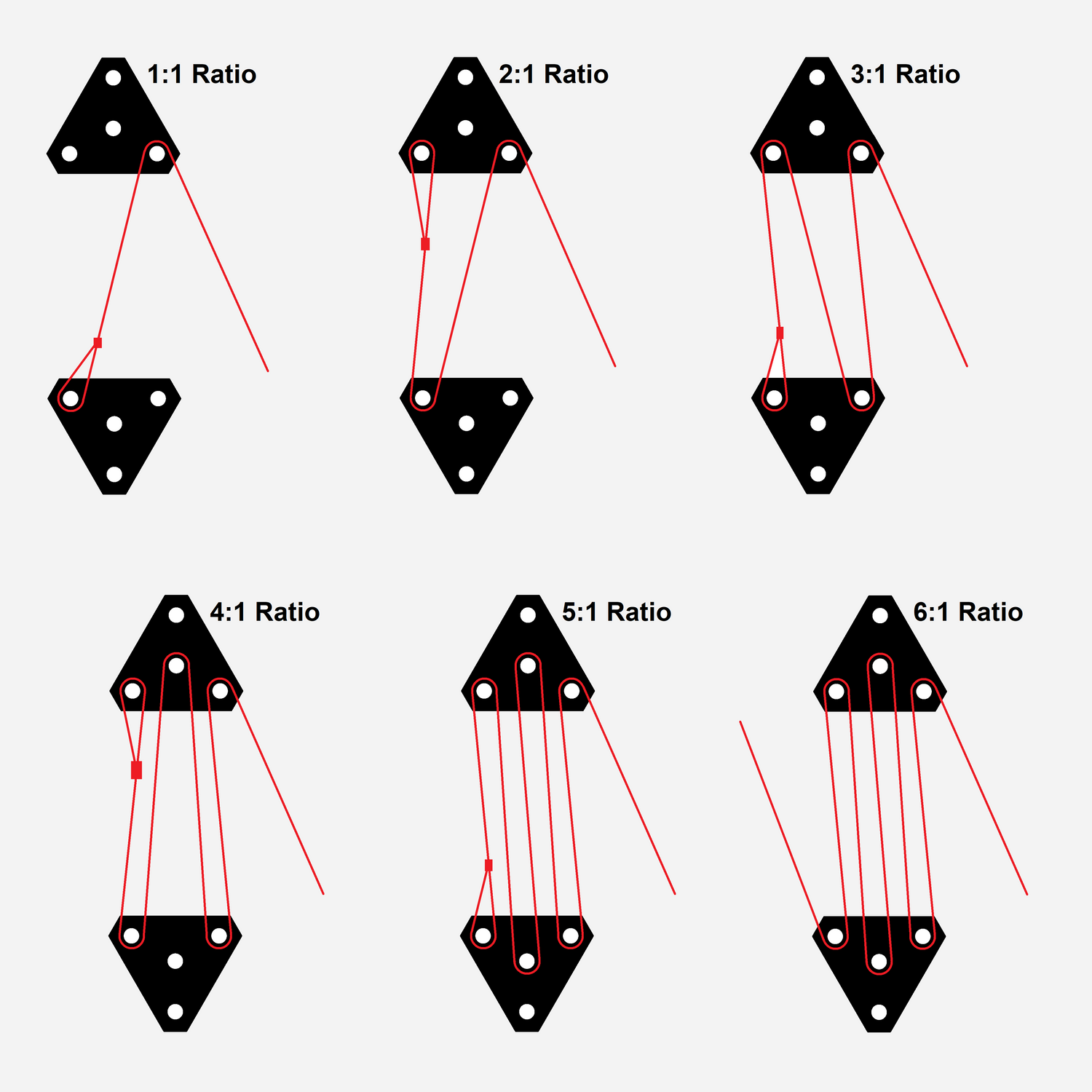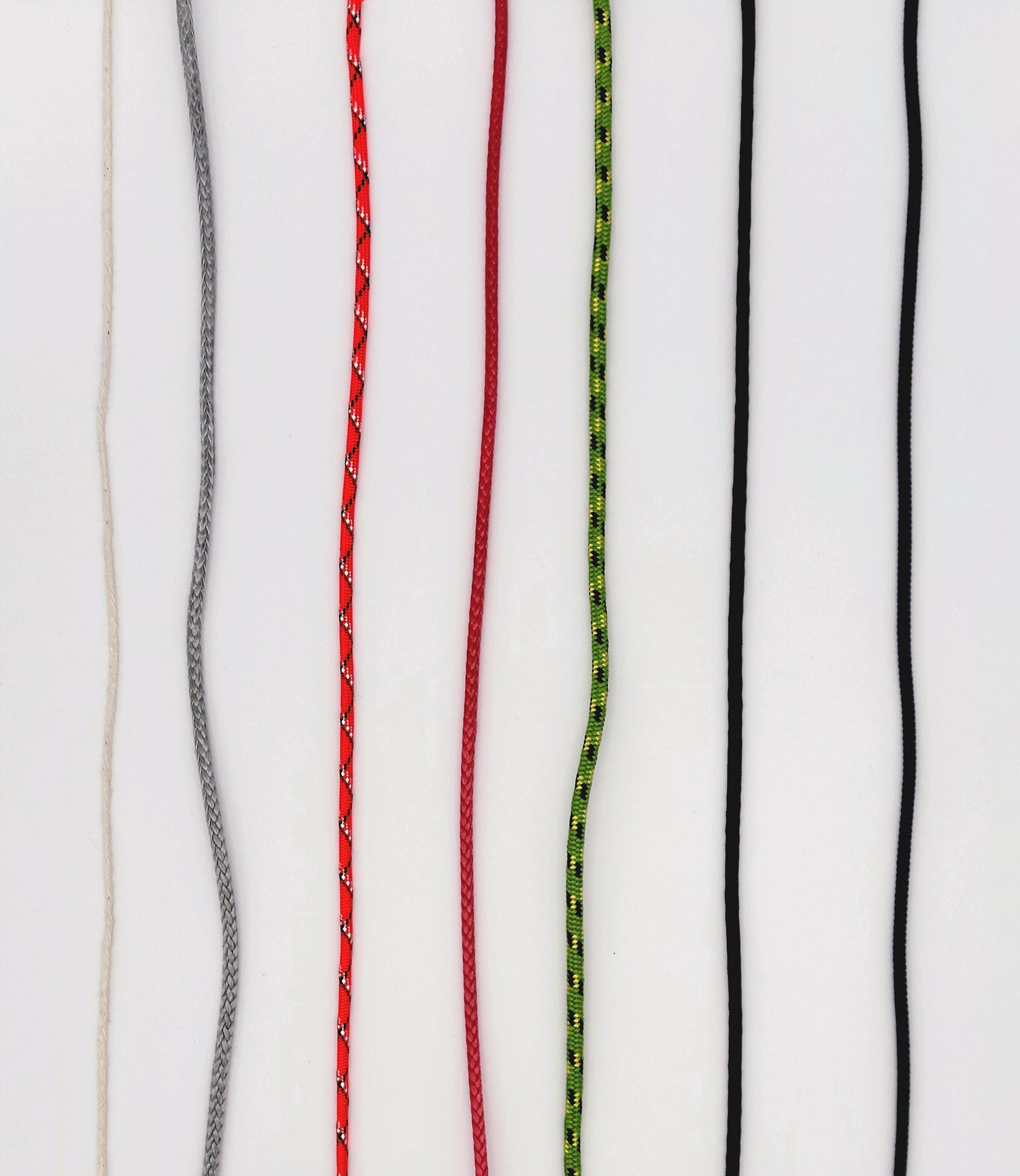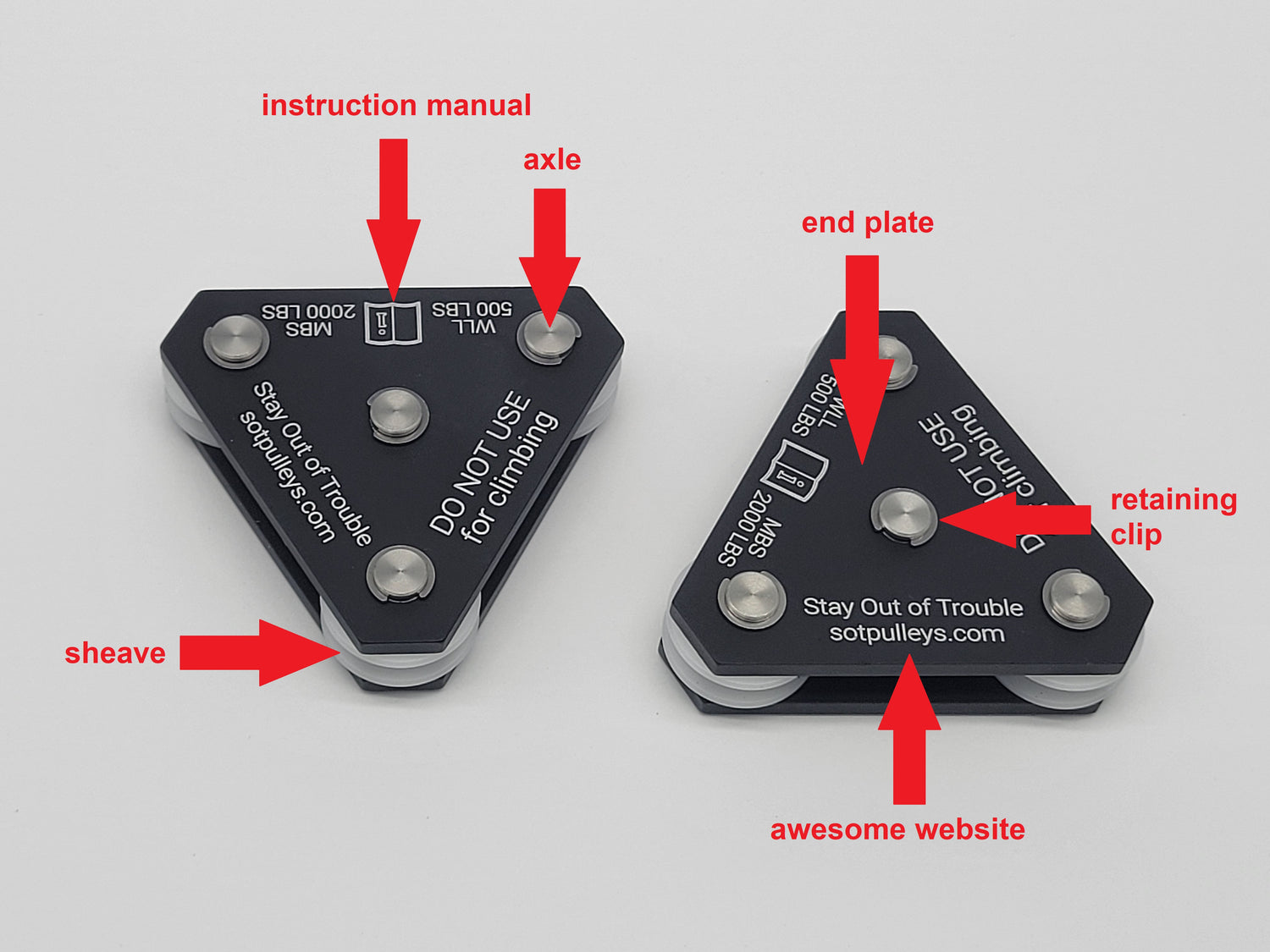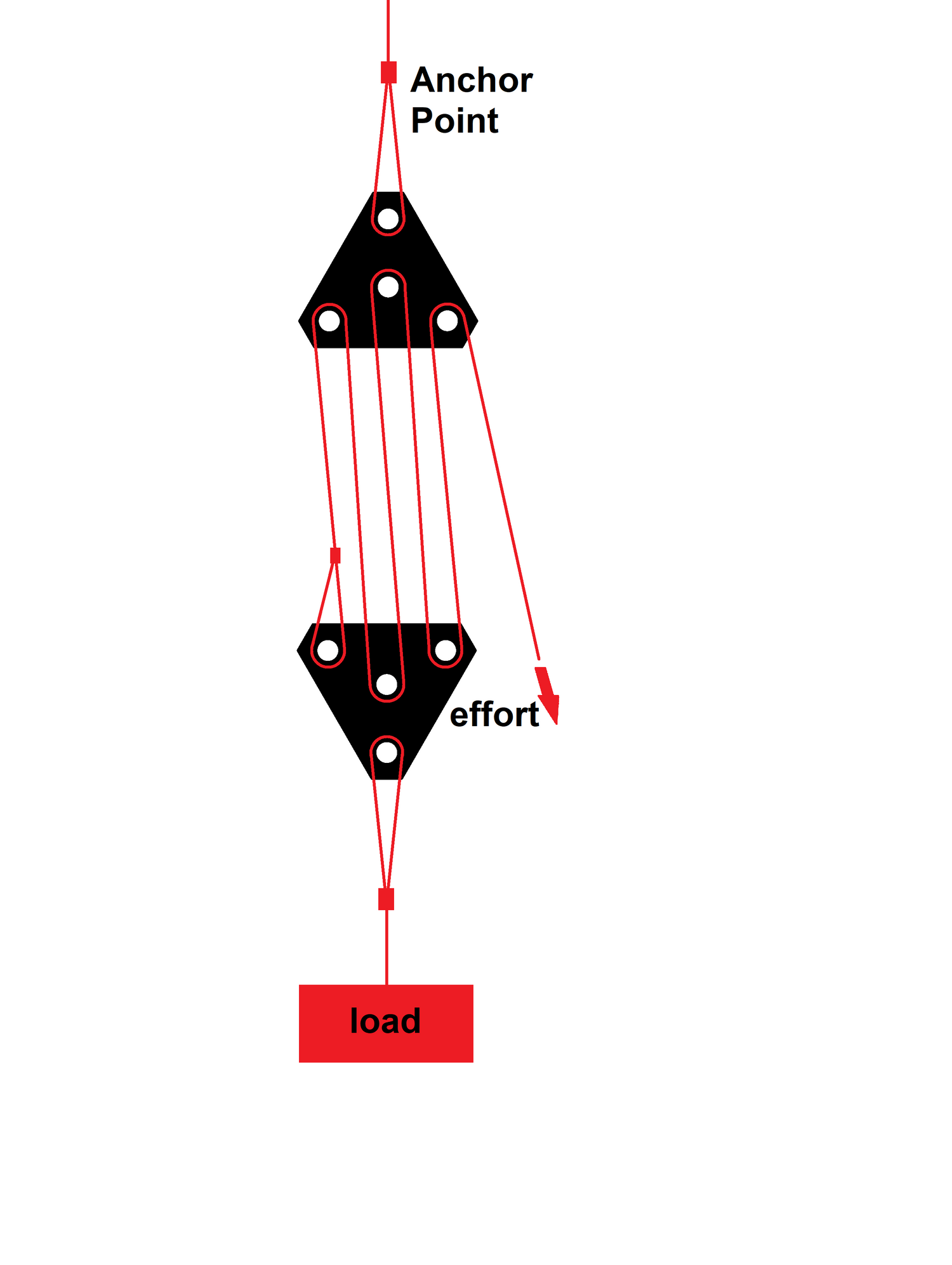How it Works

Mechanical Advantage
For pulleys, mechanical advantage is the ability to move/lift an object with less force than the object weighs. For example a 2:1 ratio allows a 100lb object to be lifted with 50lbs of force. 3:1 requires 33lbs of force. 4:1 requires 25lbs. And so on. However, a perfect ratio is near impossible to reach. Factors include, friction, rope elasticity, the angle of approach, etc. These factors determine a pulley system's "efficiency".

Rope
Rope strength is IMPORTANT!! You wouldn't use your shoelaces to lift an elk up in a tree would you? With that in mind, paracord or 550 cord is everywhere, but its strength is questionable and it has a lot of elasticity; which does not make it my first choice for this purpose. I recommend/use AmSteel-Blue 1/8" rope, it has a minimum breaking strength of 2,300lbs and 50ft of this rope only weighs 4oz. Just pay attention to the strength rating of whichever rope you decide to use. I recommend a minimum of 50ft of rope, but 100ft would be better; given that there are 3 sections of rope; the anchor, the effort and the load points.
The SOT Pulley System is designed to work with 1/8" or 3mm rope. DO NOT USE rope that is larger than 1/8" diameter.

Specifications
Weight: 3.8 oz
Height: 2"
Thick: .65"
Working Load Limit (WLL): 500 lbs
Minumum Breaking Strength (MBS): 2,000 lbs
Material: Aluminum, Stainless Steel, Delrin
Finish: Anodize Type II, Class 1 & 2

Important Information
The same size 1/8" (3mm) rope is to be used for the anchor, effort and load points.
There are 3 sections of rope; the anchor point, the effort, and the load point.
NOTE: The total weight = load + effort
Lacing: The art of fishing the rope around the different sheaves in order to accomplish the desired ratio. DO NOT lace more than 1x around a sheave.
DO NOT use for climbing! It is not designed for that application.
DO NOT lift directly overhead!
